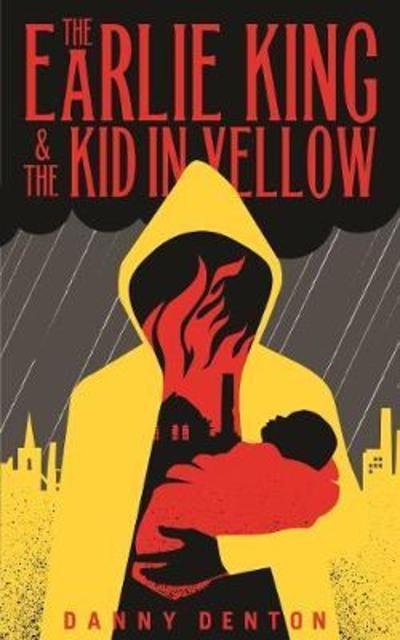The Earlie King and the Kid in Yellow (2018) is Danny Denton‘s debut novel, but not the first novel he has written. He is open and honest about the difficulties and setbacks he faced trying to get that first novel published and admits that he had written it with a publisher’s eye. Only by putting it away in a drawer and beginning again, focusing on exactly what he wanted to do. Only by “going wild and not caring” did the second novel flow. Describing the world he created for The Earlie King and the Kid In Yellow Denton says he wanted to explore a single act which would acquire mythic proportions in a place where it rains all of the time, an act of love committed in a bleak time. Although it is described as a dystopian tale, he says he always knew where to go next just by looking around him; for example, at the drug gang culture in Dublin. Asked about his decisions regarding the visual presentation of the text he says, “…you want the language to be inspired by the subject matter, there’s a license to go a bit mad while making it interesting for yourself…be true to the Kid’s knowledge of poetry and the mythic nature and the rain.”
Chair of the event Daniel Hahn, asks how they both knew they were ready for the story which was lingering around. It is really interesting to hear them describe the writing impulse in warm and humorous terms. Brook says writers should, “take the moments when they come and hopefully things will align.” Speaking about his own novel, The Killing of Butterfly Joe (2018), Brook says he set out to synthesise his own experience as a young man who sold butterflies in glass cases, while also conveying how incredibly beautiful America is and examining experience versus imagination and a duel between tragedy and comedy. The book is written as a confession and it is full of exuberance but it is only through a disciplined, organised approach to structure that he is able to create that exuberance. He adds, every storyteller has an innate sense of structure but every author should write a screenplay to learn how to handle it well.
Questions from the audience include asking Brook about faith and religion in fiction and how he chose his treatment of faith in The Killing of Butterfly Joe. Acknowledging obvious difficulties regarding getting around publishers, he replies that he chose to subvert the expected approach to be able to keep faith part of the conversation. It is refreshing to hear two authors sharing experience and motivation and describing the kinds of decisions they make about their art in order to accommodate or navigate publishers. Hahn is chairing an absorbing discussion, seemingly effortlessly, with great skill.
